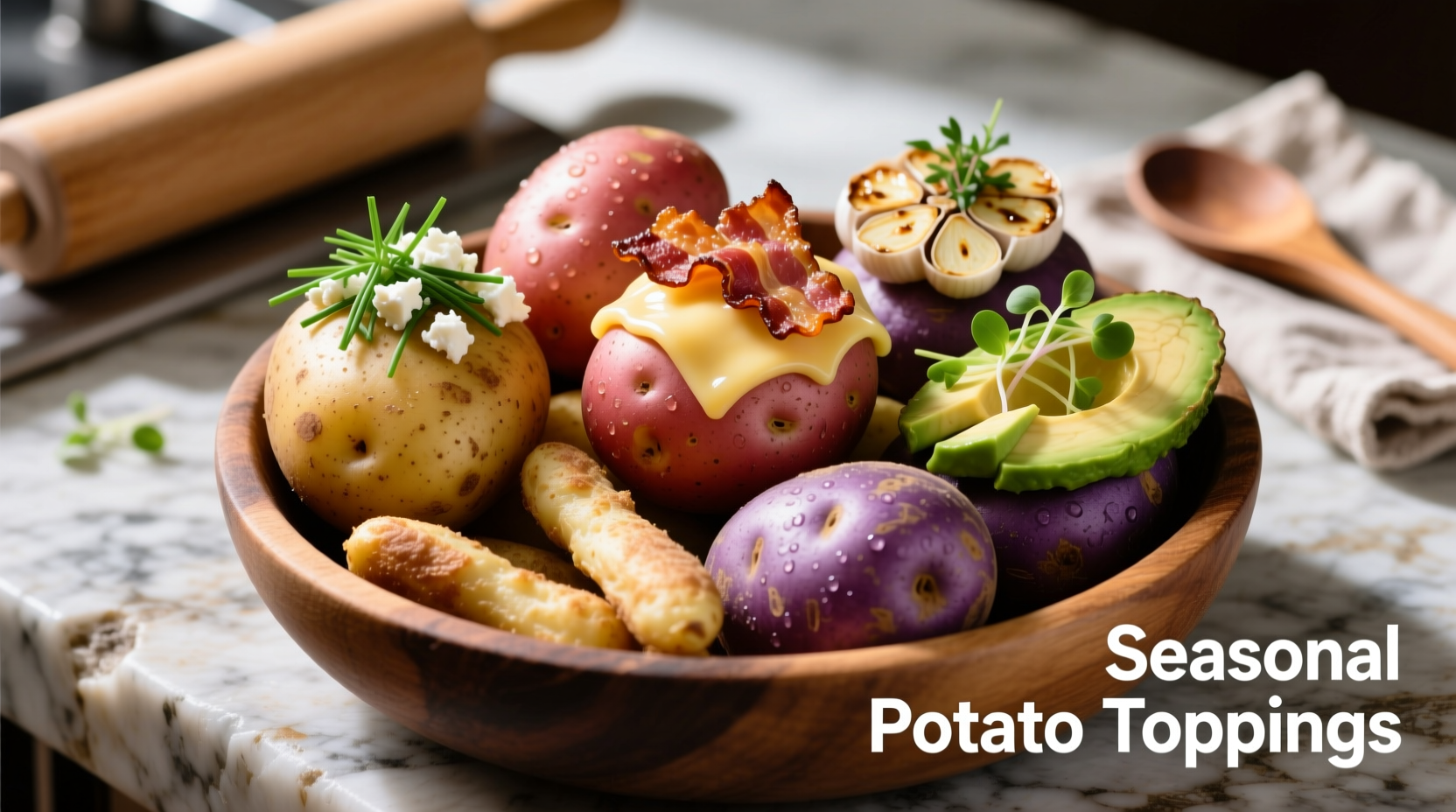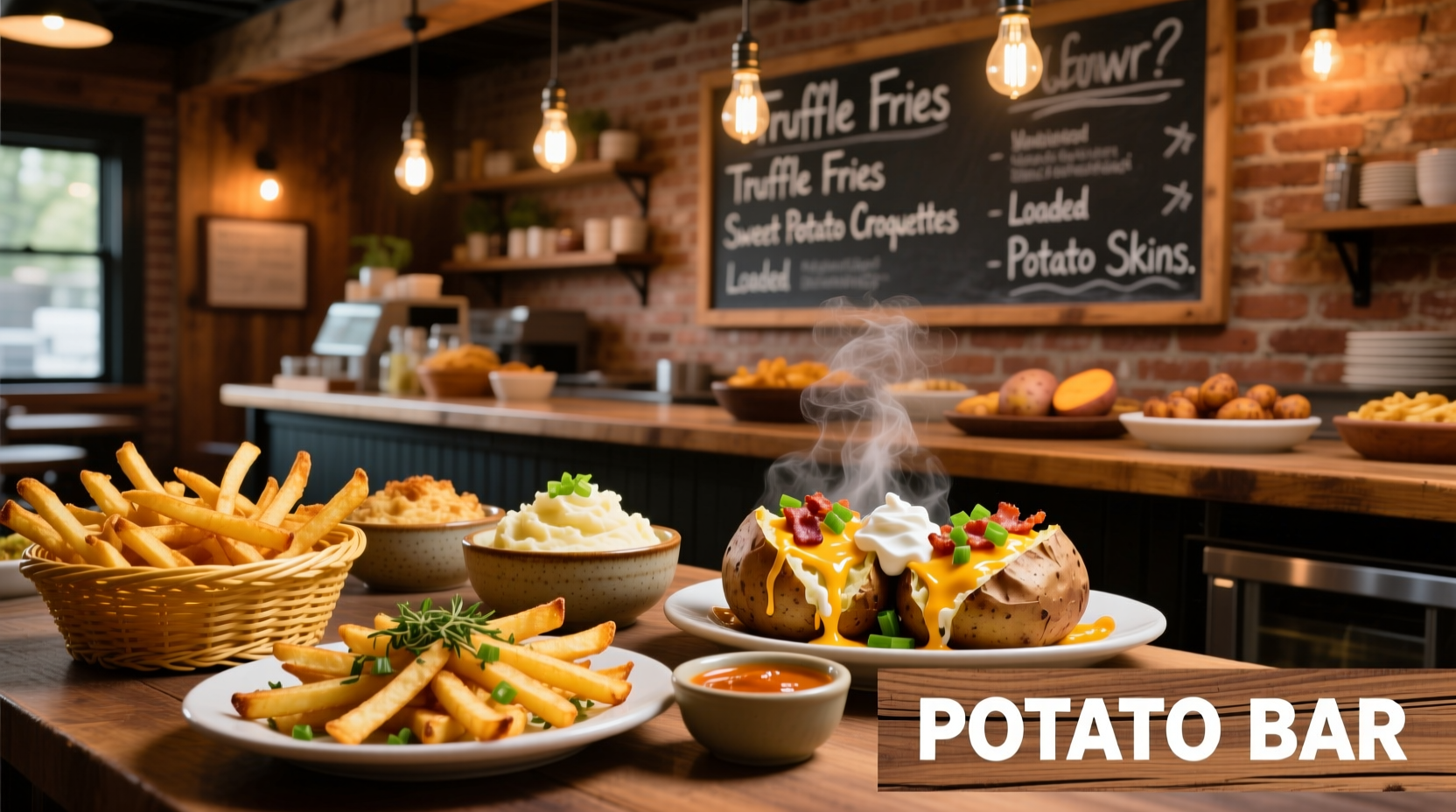A potato bar is a self-serve food station featuring baked or boiled potatoes with a variety of toppings, perfect for casual gatherings, weddings, and corporate events. This versatile concept accommodates diverse dietary needs while offering customizable meal options that guests can personalize to their taste preferences.
Hosting an event where everyone leaves satisfied can be challenging, but a well-executed potato bar solves this dilemma. As a culinary professional with extensive experience in event food service, I've seen how this simple concept transforms ordinary gatherings into memorable experiences. Whether you're planning a wedding reception, corporate luncheon, or family reunion, understanding how to create the perfect potato bar will save you time, reduce food waste, and delight your guests with personalized meal options.
The Evolution of the Potato Bar Concept
What began as a humble diner offering in mid-20th century America has evolved into a sophisticated catering solution. The modern potato bar traces its roots to post-World War II diners that served baked potatoes as affordable, customizable meals. According to the Irish Department of Agriculture, the concept gained popularity in the 1970s as health-conscious dining emerged, with potatoes recognized for their nutritional value and versatility.
| Era | Key Developments | Popular Toppings |
|---|---|---|
| 1950s-1960s | Diner staple, basic preparation | Butter, sour cream, chives |
| 1970s-1980s | Health-conscious additions, vegetarian options | Cheese, chili, broccoli |
| 1990s-2000s | Gourmet expansion, international influences | Pico de gallo, guacamole, curry sauces |
| 2010s-Present | Dietary accommodation focus, sustainable sourcing | Vegan cheese, artisanal bacon, locally-sourced toppings |
Planning Your Potato Bar: Essential Considerations
Successful potato bars start with thoughtful planning. The FDA Food Code recommends maintaining hot foods at 140°F or above to prevent bacterial growth, which directly impacts your equipment choices and setup.
Understanding Your Event Context
Not every occasion suits a potato bar. This concept works best for:
- Casual to semi-formal events (weddings, family reunions, office parties)
- Guest counts of 25+ people (economical at scale)
- Events lasting 2+ hours (allows for self-service flow)
Limitations to consider:
- Formal dining events where plated service is expected
- Very small gatherings (under 15 guests) where individual preparation makes more sense
- Locations without adequate electrical access for warming equipment
Potato Selection and Preparation Guide
The foundation of any successful potato bar is quality potatoes. Russet potatoes remain the gold standard due to their fluffy texture when baked, but don't overlook these excellent alternatives:
- Russets: Ideal for traditional baked potatoes (1 potato per person)
- Yukon Golds: Creamier texture, perfect for boiling (1.5 per person)
- Sweet Potatoes: Adds color variety and nutritional benefits (0.75 per person)
For optimal results, bake potatoes at 400°F for 45-60 minutes until tender. The USDA Agricultural Research Service confirms that baking preserves more nutrients than boiling, with potatoes retaining up to 90% of their vitamin C content when baked with skin intact.

Topping Strategy: Creating Balance and Variety
A well-designed topping selection accommodates diverse preferences while minimizing waste. Professional caterers recommend these ratios for balanced offerings:
- Cold toppings: 40% (sour cream, salsa, guacamole)
- Warm toppings: 30% (chili, cheese sauce, bacon)
- Fresh elements: 20% (chives, scallions, cilantro)
- Specialty items: 10% (truffle oil, caviar for upscale events)
For dietary accommodations, include at least two options from each category:
- Vegan: Dairy-free cheese, cashew sour cream
- Gluten-free: Naturally GF toppings (most potato bar options are GF)
- Low-sodium: Fresh herbs instead of salted toppings
- Protein-rich: Black beans, grilled chicken, salmon
Equipment and Setup Essentials
Professional results require proper equipment. For events under 50 guests, you'll need:
- Insulated food warmers (chafing dishes with fuel cells)
- Multiple serving utensils (one per topping)
- Clear signage for allergens and ingredients
- Discreet waste containers for unused toppings
Layout matters significantly for guest flow. Position your potato bar against a wall with a single entry point to prevent congestion. Place potatoes at the beginning of the line, followed by toppings in logical sequence (bases first, then proteins, vegetables, and finishing touches).
Cost-Saving Tips for Budget-Conscious Hosts
Creating a potato bar doesn't need to break the bank. Implement these professional strategies:
- Purchase potatoes in bulk from local farmers during harvest season (August-October in North America)
- Use seasonal produce for toppings (salsa in summer, roasted vegetables in fall)
- Prepare toppings in advance and freeze (chili, cheese sauce)
- Opt for reusable serving containers instead of disposable
According to CDC nutrition data, potatoes provide more potassium per serving than bananas and are an excellent source of vitamin C and fiber, making them a nutritionally sound base for your event menu.
Troubleshooting Common Potato Bar Challenges
Even experienced hosts encounter issues. Here's how to handle frequent problems:
- Problem: Potatoes cooling too quickly
Solution: Use thermal bags during transport and pre-heat serving containers - Problem: Toppings running out early
Solution: Implement a 2:1 ratio of base potatoes to specialty toppings - Problem: Messy eating experience
Solution: Provide sturdy plates and multiple napkin stations
Creative Variations to Elevate Your Potato Bar
Stand out with these innovative twists on the traditional concept:
- International Potato Bar: Feature regional toppings like curry sauce (India), chorizo and pico de gallo (Mexico), or smoked salmon and dill (Scandinavia)
- Breakfast Potato Bar: Offer hash browns with breakfast toppings like scrambled eggs, breakfast meats, and maple syrup
- Dessert Potato Bar: Sweet potato base with marshmallow, pecans, and cinnamon for a unique dessert option











 浙公网安备
33010002000092号
浙公网安备
33010002000092号 浙B2-20120091-4
浙B2-20120091-4